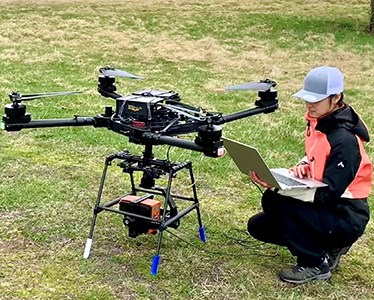With drone images from multispectral cameras, research shows that 80% of the trees can be detected within 10 weeks after a bark beetle attack, two times as we can see from the ground. Now, researchers aim to upgrade drone sensors and shorten the time from tree infestation to identification in drone images, using hyperspectral drone techniques.
One of the first symptoms when trees are attacked by bark beetles is reduced nutrition and water transportation in the trunk, and when the fluid content decreases, the light reflected from the spruce needles is affected. Light captured by the drone's hyperspectral camera provides researchers access to over 400 spectral bands. Some bands are sensitive to vitality changes and offer significantly higher accuracy than the multispectral camera's 9 bands.
-It is primarily the visible light changes when chlorophyll and fluid levels decline, but also infrared light (NIR and SWIR) from the tree canopy that changes, says Luiz Cosimo, doctoral student at SLU.
Using statistical methods, researchers find correlations between these light changes, combinations of different spectral bands, and field surveys to develop models enabling the detection of infested trees as early as possible after damage attacks.
Nevertheless, the time window to detect and remove infested trees before the bark beetles are spreading is still very limited for operational use.
-Unfortunately, the multispectral cameras currently in the market can hardly achieve detection before infestation spreads and the hyperspectral technique is not directly applicable for practical use as it is too expensive, says Langning Huo, researcher at SLU. But findings from the fundamental research can guide us in upgrading the low-cost multispectral sensors for drones and satellites and it can also provide insights into new methodologies for forest stress monitoring.
In the future, the research group hopes to combine drone images and field inventory data with satellite imagery to develop models that can utilize the extensive coverage of satellite images while retaining detailed information about the forest landscape.
Recent years, drought and storms have increased in Europe, creating favorable conditions for European spruce bark beetles. Bark beetles usually feed on dead spruces, but with large populations, they also attack healthy trees, causing enormous losses to forestry. By detecting bark beetle outbreaks early, damages can be limited and prevent the beetles from spreading to surrounding forests. Hyperspectral techniques support us in understanding how trees defend themselves and adapt to stress and reveal the decline process that gives clues on stress detection.
